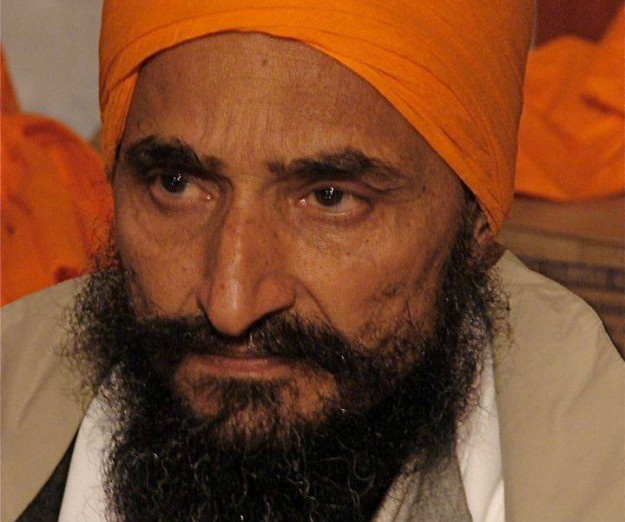We often hear about love. Love for our family, love for our friends, love for our significant others, and that elusive, true love, love for Sikhi. Although it seems pretty obvious when we say love for Sikhi, one reflective moment might bring about different definitions. Is it our love for Vaheguru Jee? Our love for Rehat? Our love for Gurbani?
To put it directly, the definition becomes irrelevant. It is that thirst, that longing, that wanting for Vaheguru Jee that personifies true love. The panj chor only remain chor when they keep us from Vaheguru Jee; attachment to Vaheguru Jee, desire for Vaheguru Jee, pain of separation are all signs of love, aching love.
To someone who has yet to experience this true love, seeing it in others can bring about a plethora of emotions. A Gursikh so lovingly reciting Gurbani during an Akhand Paath Sahib that his hands and body move with signs of affection and his melodious voice playfully converses with Guru Sahib; a Gursikh who can barely walk and do matha teak due to old age, standing for long periods of time doing Chaur Seva with the brightest, most affectionate smile; a Keertanee so absorbed in the Shabad that one Gurbani line becomes her fixation and it is repeated over and over.
This true love also brings about another important component: well-being of others. It is often written and said by many that once this true love manifests, Vaheguru Jee is seen in everyone. Ego slowly starts to depart and upon its departure, the self becomes less important. Seeing, feeling, knowing that Vaheguru Jee is in, around, embedded, absorbed, fastened, in everything and everyone, true lovers, detached and just passing time, lose focus of the self, and out of true love, personify Seva. Everything literally becomes Tuhee, Tuhee.
The most recent example of the personification of Seva came from the Gursikh who sat on hunger strike for more than 40 days to help others achieve their freedom. There are not many in this world who have the kamaaee (true love) and drive to start and sustain a morcha (protest) in the name of helping others. Disregarding his own well-being, physical body, and playfully teasing death, Bhai Gurbaksh Singh Jee Khalsa emanates the essence of true love. Lacking any sense of self, his words always centered around a few common themes: Vaheguru Jee’s will, reinvigorating Sikhi, mobilizing Sikh youth (naujawan), and tenderly holding the notion of human rights and freedom in the palms of his hands, infectious smile, and fragile frame. Even the most unaware, uninterested individual inevitably became enraptured by him. Seeing this in him, emanate from him, one could not hold back tears of praise, inspiration or bursts of activism, charged by his truthful words and sincere actions.
Such bouts of true love also invoke the memory of another iconic, sacha Gursikh: Sant Jarnail Singh Jee Khalsa Bhindranwale. Inspiring future Gursikh leaders such as Bhai Gurbaksh Singh Jee Khalsa, Sant Jee, amongst the others who have come and gone, remains in our Khalsa Panth’s permanent cherished history. Bhai Gurbaksh Singh Jee Khalsa himself attributes his inspiration to do parchar for Sikhi to Sant Jee.
Regardless of where one is religiously, most Sikhs, young and old, know of, have seen, or heard Sant Jee’s words and image. Again, there are few examples of such kamaaee-vale Gursikhs in our recent history. Sant Jee’s persona, mannerisms, and lifestyle were sought after and mimicked by countless Sikhs. Thousands attended his speeches; thousands looked to him as their rightful, panthic leader; more importantly, thousands took Amrit because of his parchar, presence, and piety.
True love emanates from both these Gursikhs in an intimately close way, and both shared the same simple message: come back to Sikhi. We are given jewels such as Sant Jarnail Singh Jee Khalsa Bhindranwale and Bhai Gurbaksh Singh Jee Khalsa, yet it seems their presence and parchar reflexively becomes a fleeting moment in our panthic memory.
They spoke, emanated, felt, and cherished true love because they experienced true love for Sikhi. Sadly, our current Khalsa Panth has become one of suspicion and doubt. Leaders come and go, our Sikh Kaum is repeatedly disappointed, but once in a while, a jewel will appear. Theses jewels are invaluable due to their kamaaee.
Rather than focus on the negative, it seems more fruitful to relish in these jewels we have been given. The feeling while hearing these Gursikhs do parchar, recite Gurbani, and speak of true love can, at times, be indescribable. The heart wrenches with emotions so profound, a single utterance from these Gursikhs can make the strongest willed individual shed a tear, feel sheer excitement, and the most beautiful of all, be blessed with an aura of their true love (originating from Vaheguru Jee) and be driven to keep his hair, wear a Dastar, learn Gurbani, start Nitnem, or be blessed with Khande dee Pahul.
Humble Ardas to Vaheguru Jee that our Kaum be continuously blessed with such jewels. May Gursikhs such as Sant Jarnail Singh Jee Khalsa Bhindranwale continue to inspire sache, future panthic leaders. May hidden jewels in our Kaum continuously bless us with their melodious recitation of Gurbani, effortless Seva, and emanation of true love.
Damanvir Kaur holds a Masters in Sociology from the University of North Carolina at Charlotte where her thesis explored religion and politics, and looked at BJP political speeches and their connection to Hinduism and the RSS.


